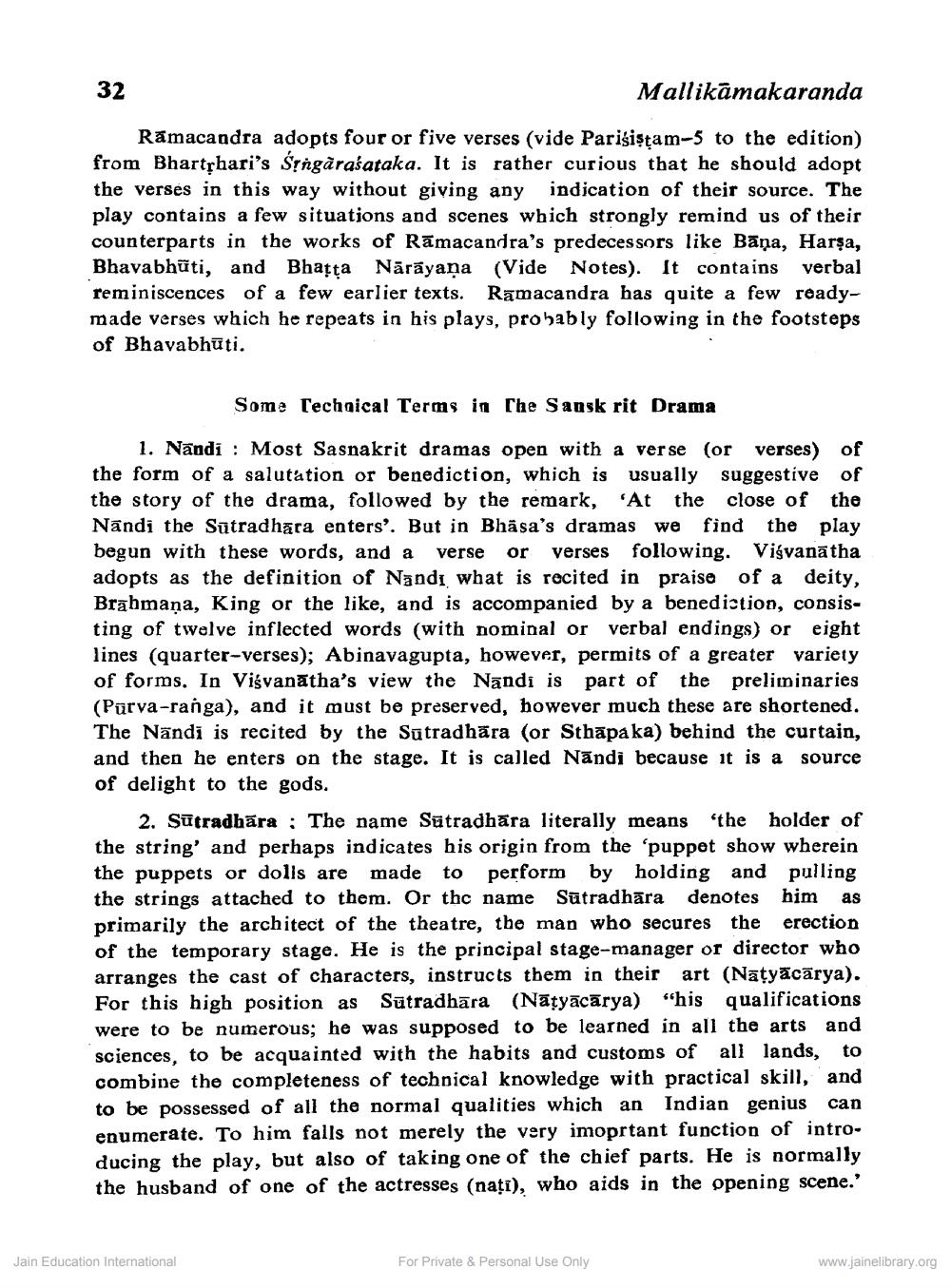________________
32
Mallikamakaranda
Rāmacandra adopts four or five verses (vide Parisistam-5 to the edition) from Bhartphari's Śrngåraśataka. It is rather curious that he should adopt the verses in this way without giving any indication of their source. The play contains a few situations and scenes which strongly remind us of their counterparts in the works of Rāmacandra's predecessors like Bāņa, Harsa, Bhavabhūti, and Bhatta Nārāyana (Vide Notes). It contains verbal reminiscences of a few earlier texts. Ramacandra has quite a few readymade verses which he repeats in his plays, probably following in the footsteps of Bhavabhūti.
Some Technical Terms in the Sansk rit Drama
1. Nandi : Most Sasnakrit dramas open with a verse (or verses) of the form of a salutation or benediction, which is usually suggestive of the story of the drama, followed by the remark, 'At the close of the Nandi the Sūtradhāra enters'. But in Bhāsa's dramas we find the play begun with these words, and a verse or verses following. Visvanātha adopts as the definition of Nandı what is recited in praise of a deity, Brāhmaṇa, King or the like, and is accompanied by a benediction, consisting of twelve inflected words (with nominal or verbal endings) or eight lines (quarter-verses); Abinavagupta, however, permits of a greater variety of forms. In Visvanātha's view the Nandi is part of the preliminaries (Purva-ranga), and it must be preserved, however much these are shortened. The Nandi is recited by the Sutradhāra (or Sthāpa ka) behind the curtain, and then he enters on the stage. It is called Nandi because it is a source of delight to the gods.
2. Sūtradhāra ; The name Sutradhāra literally means 'the holder of the string' and perhaps indicates his origin from the 'puppet show wherein the puppets or dolls are made to perform by holding and pulling the strings attached to them. Or the name Sūtradhāra denotes him as primarily the architect of the theatre, the man who secures the erection of the temporary stage. He is the principal stage-manager or director who arranges the cast of characters, instructs them in their art (Natyācārya). For this high position as Sūtradhāra (Natyācārya) "his qualifications were to be numerous; he was supposed to be learned in all the arts and sciences, to be acquainted with the habits and customs of all lands, to combine the completeness of technical knowledge with practical skill, and to be possessed of all the normal qualities which an Indian genius can enumerate. To him falls not merely the very imoprtant function of introducing the play, but also of taking one of the chief parts. He is normally the husband of one of the actresses (naţi), who aids in the opening scene.'
Jain Education International
For Private & Personal Use Only
www.jainelibrary.org




